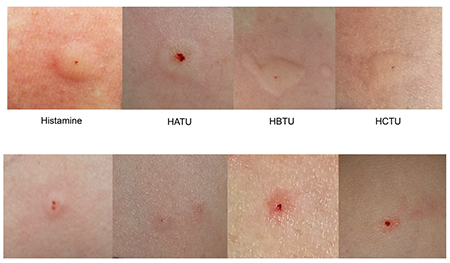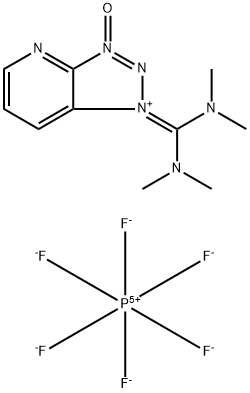The effect of HATU on human health
Introduction
HATU is reported to cause skin, eye, or respiratory irritation, and is denoted by an exclamation mark hazard symbol. HATU has been shown to be clearly superior in terms of coupling efficiency for coded amino acids as well as for unnatural hindered amino acids, and in the suppression of racemization in both solution and solid-phase methods [1].
The condensing agents of carbonium salts are divided into two categories according to the type of salt. The first carbonium salts are carbonium salts, and currently commonly used are HATU, HBTU, HCTU, TBTU, TSTU, TNTU, etc. The second carbonium salts is phosphonium salt, the earliest is PyBOP reagent, which produces carcinogenic hexamethylphosphoramide (HMPA) by-product, so it has been replaced by PyBOP, which is more active and does not produce carcinogenic by-products in recent years . PyBOP is a relatively strong condensing agent. Generally, PyBOP can be used to obtain better results when other condensing agents are not condensed well. For example, PyBOP can be used to condense amino acids with ammonium chloride to obtain the corresponding aminoamides. More recently, the condensing agent of PyAOP has been reported to be more active.
Performance comparison between HATU, HBTU and HCTU
The difference between the performance and application of carbonium salt reagents: HATU is the most active carbonium salt condensing agent, but it is rarely used in industrial production due to its high price, and it is often used when other condensing agents are not effective. HBTU is relatively more economical and can be used for most condensation reactions, however its lower yield is the main reason for limiting its use in large-scale production. HCTU has higher activity and can be used in industrial production instead of HATU, and its high activity is attributed to the Cl-HOBt intermediate with better activity. TSTU and TNTU can be used for amidation reactions in aqueous solvents. If the dimethylamino group of HATU and HBTU is changed to tetrahydropyrrolyl, O-(7-azabenzotriazole-1-yl)-bis(tetrahydropyrrolyl) carbon can be obtained with higher activity than them Onium hexafluorophosphate (HAPyU), O-(benzotriazol-1-yl)-bis(tetrahydropyrrolyl)carbonium hexafluorophosphate (HBPyU), but these reagents are extremely expensive.
Experimental Confirmation.
We suspected that peptide coupling agents caused KJM’s allergic reactions. An allergist and clinical immunologist (WS) tested the researcher for allergies to a panel of over 60 allergens by skin prick tests to determine if common environmental allergens accounted for her anaphylaxis. She was only slightly allergic to two environmental allergens, but not so allergic that they would cause anaphylaxis. Skin prick tests were then performed to determine if she was allergic to HATU, HBTU, HCTU, DCC, Fmoc-leucine-OH, Fmocphenylalanine-OH, and Fmoc-asparagine(Trt)-OH. The researcher worked with most of the canonical amino acids in their Fmoc-protected forms, so three were chosen as representative amino acids. DCC was included as a control, because it is a notorious sensitizer that the researcher had never previously worked with. As hypothesized, the researcher had severe positive allergic reactions to uronium peptide coupling agents, but only mild responses to Fmoc-protected amino acids. The coupling agents HATU, HBTU, and HCTU all caused the formation of large hives, comparable in size to those formed by the histamine positive control (Figure 1). DCC did not cause any reaction, which is not surprising as the researcher was never previously exposed to DCC. Fmoc-leucine-OH, Fmocphenylalanine-OH, and Fmoc-asparagine(Trt)-OH all elicited minor reactions and produced hives much smaller in size than the histamine positive control. The lack of a strong reaction to the Fmocprotected amino acids is not surprising, as they are not known chemical sensitizer

Picture 1 The effect of different drugs on the skin[1]
Reference
1 Abdelmoty I, Albericio F, Carpino L A, et al. Structural studies of reagents for peptide bond formation: crystal and molecular structures of HBTU and HATU[J]. Letters in Peptide Science, 1994, 1(2): 57-67.
);You may like
Lastest Price from HATU manufacturers

US $5.00/kg2024-04-27
- CAS:
- 148893-10-1
- Min. Order:
- 1kg
- Purity:
- 99.92%
- Supply Ability:
- 50000tons

US $0.00-0.00/Kg/Drum2023-11-15
- CAS:
- 148893-10-1
- Min. Order:
- 1KG
- Purity:
- 99.5%min
- Supply Ability:
- 1000KGS

